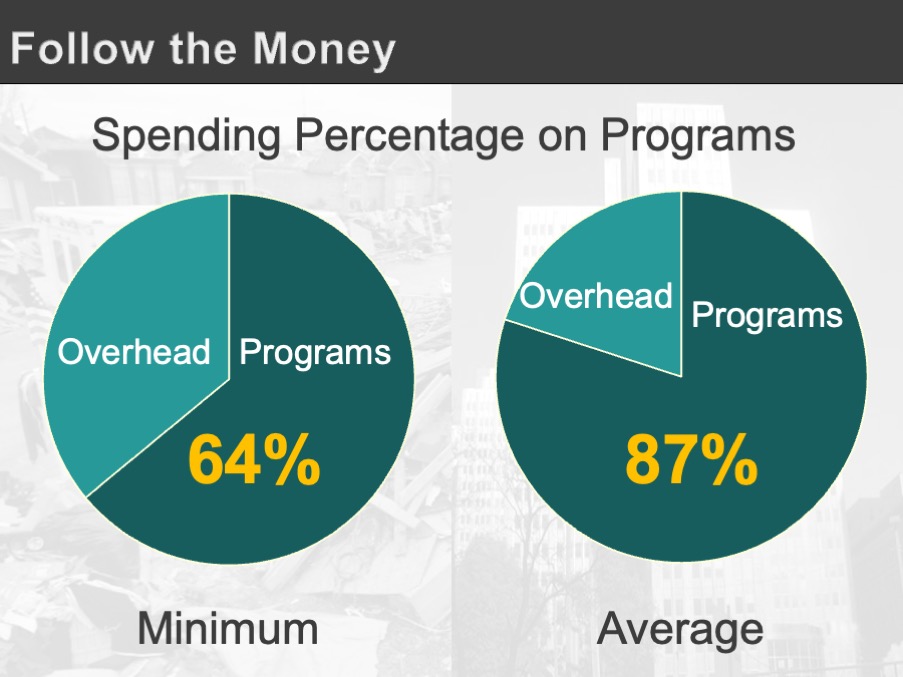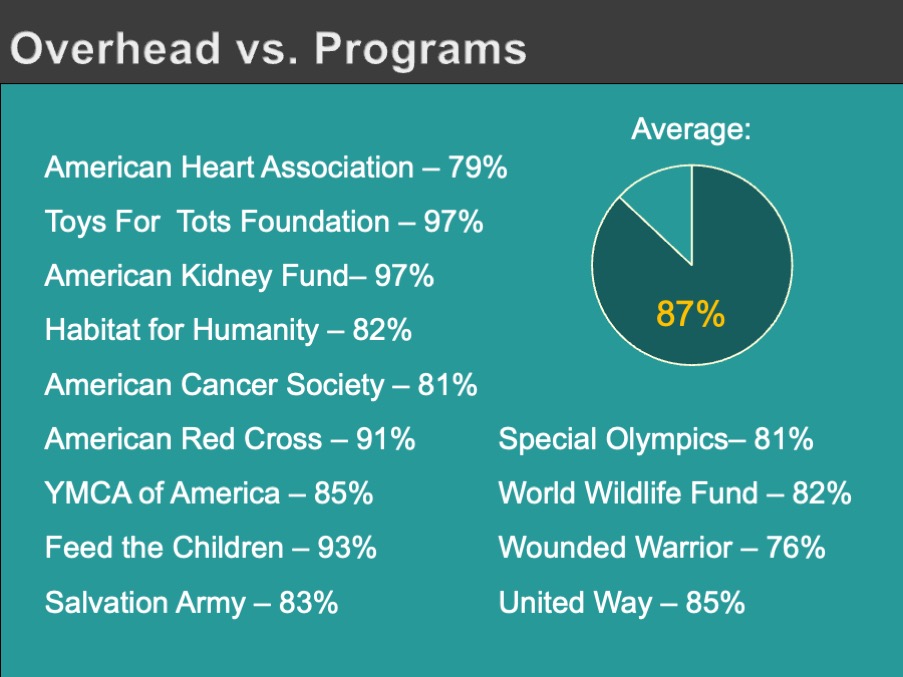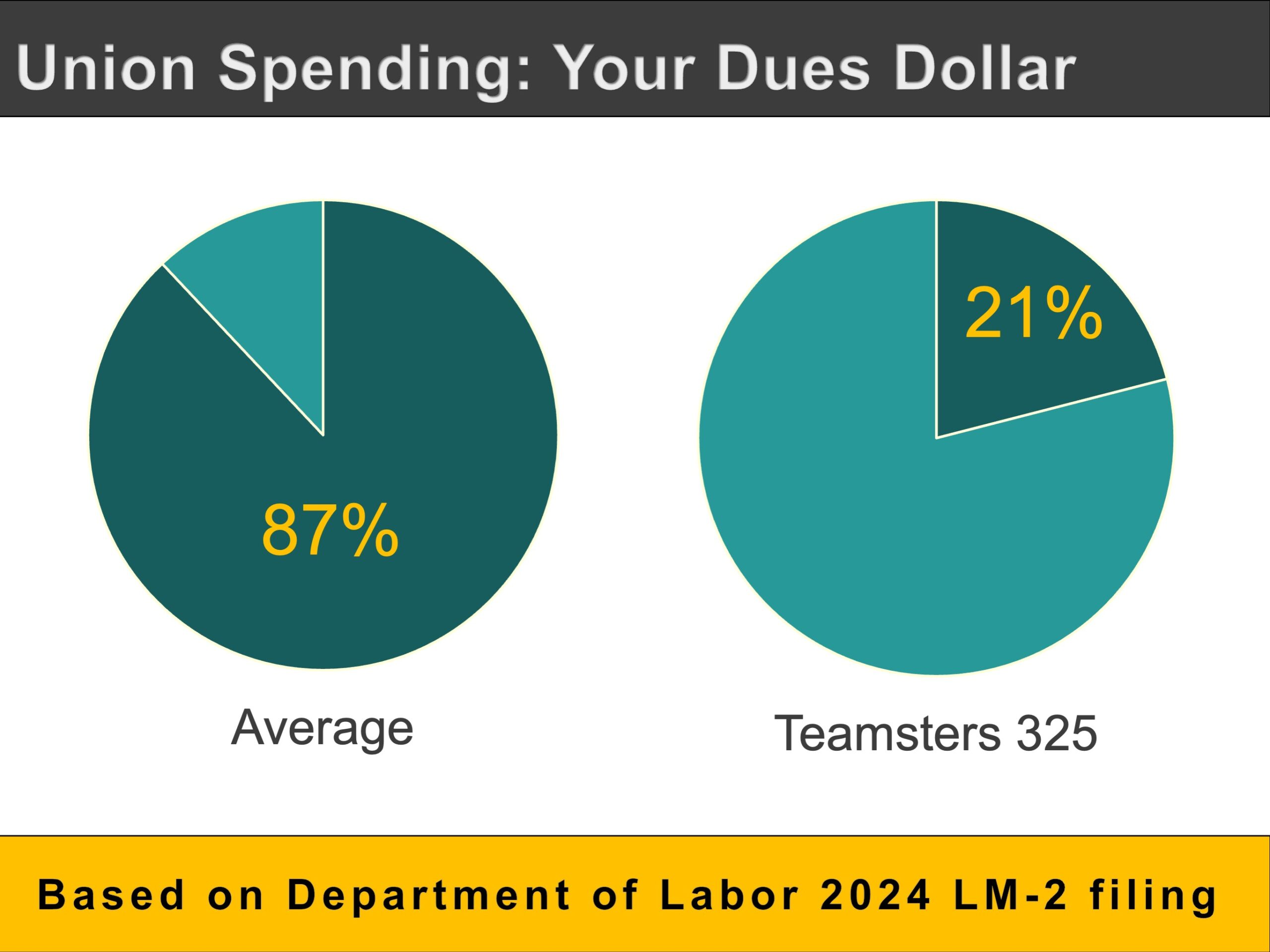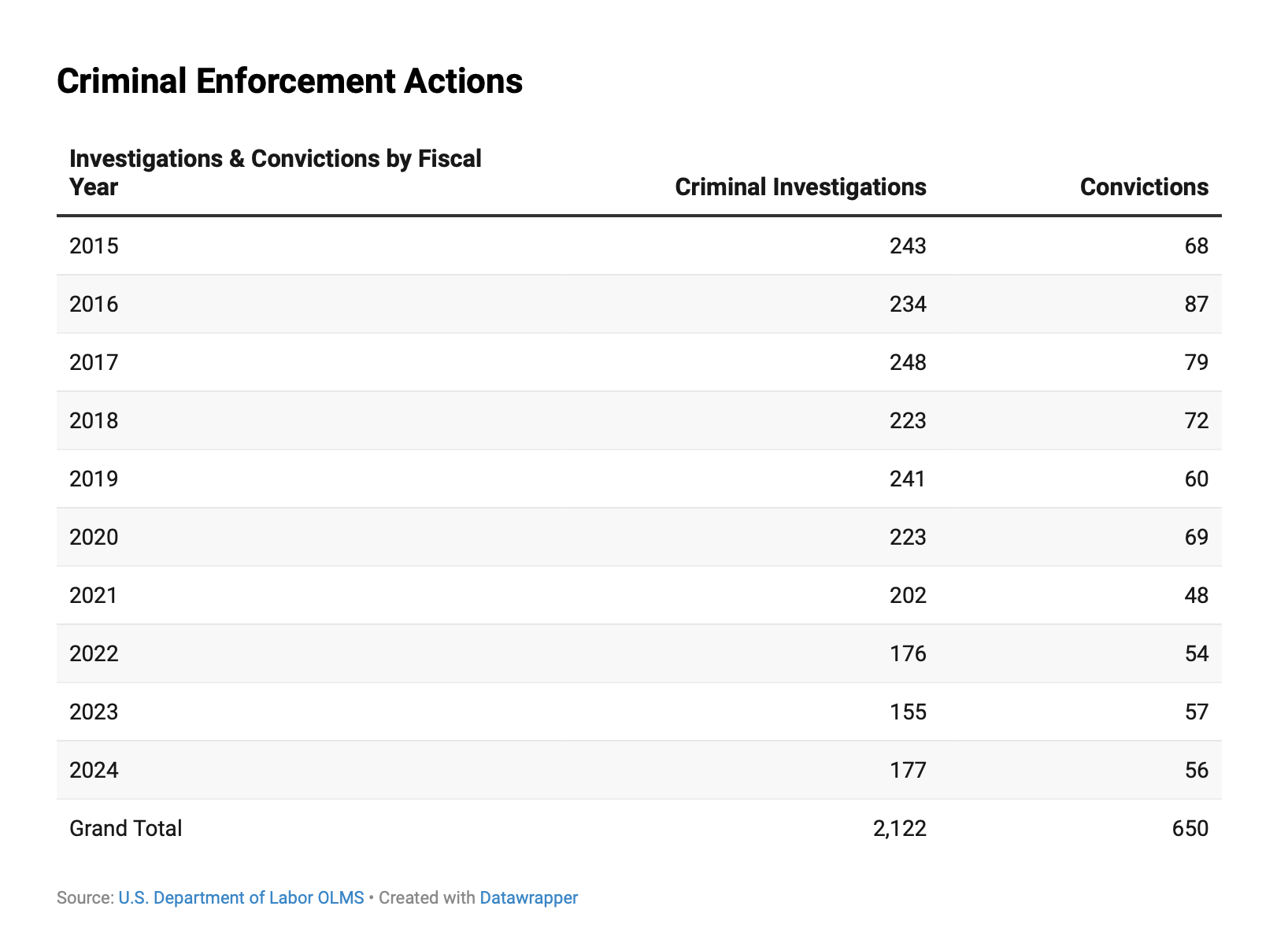
Unions like to present themselves as similar to a nonprofit organization, working for the benefit of those they supposedly represent. One of the best ways to evaluate the trustworthiness of a nonprofit is to look at the percentage of total spending that goes directly into their stated programs, versus what they spend on running the organization.
Charity watchdogs like the Better Business Bureau Wise Giving Alliance and the Charity Review Council say this percentage should be no lower than 64%.

The average spending on programs of the top 100 charities in the country, according to the Forbes Top Charities list for 2024, was 87% – far above the minimum.
The image above is a list of how some well-known nonprofits stack up to this measure.

Did the Teamsters 325 even come close?
Hardly! According to their own financial statement, Teamsters 325 posted total income of almost $1 Million in 2024, yet spent only 21% on Representational Activities, including strike payments. The rest was spent on salaries, benefits and perks, office space and equipment, politics, taxes, and other overhead expenses. Almost the exact opposite of organizations whose stated purpose is to help people.
An old adage reminds us to “choose our friends wisely.”
The table at the right provides some indication of the “company you keep” with the Teamsters. Another indication is how many Unfair Labor Practice charges have been filed against them. Although the Teamsters has gotten better since the mid-90’s when they averaged about 1100 ULP’s per year, in the last 10 years they’ve still averaged 501 ULP’s each year.
They have also averaged about 28 strikes per year over the last five years. Over the last 10 years, the average strike lasted over 73 days. That’s quite a while to be without a paycheck. During that same 10 years, 35 strikes lasted over 100 days, and 8 strikes lasted over 400 days.

